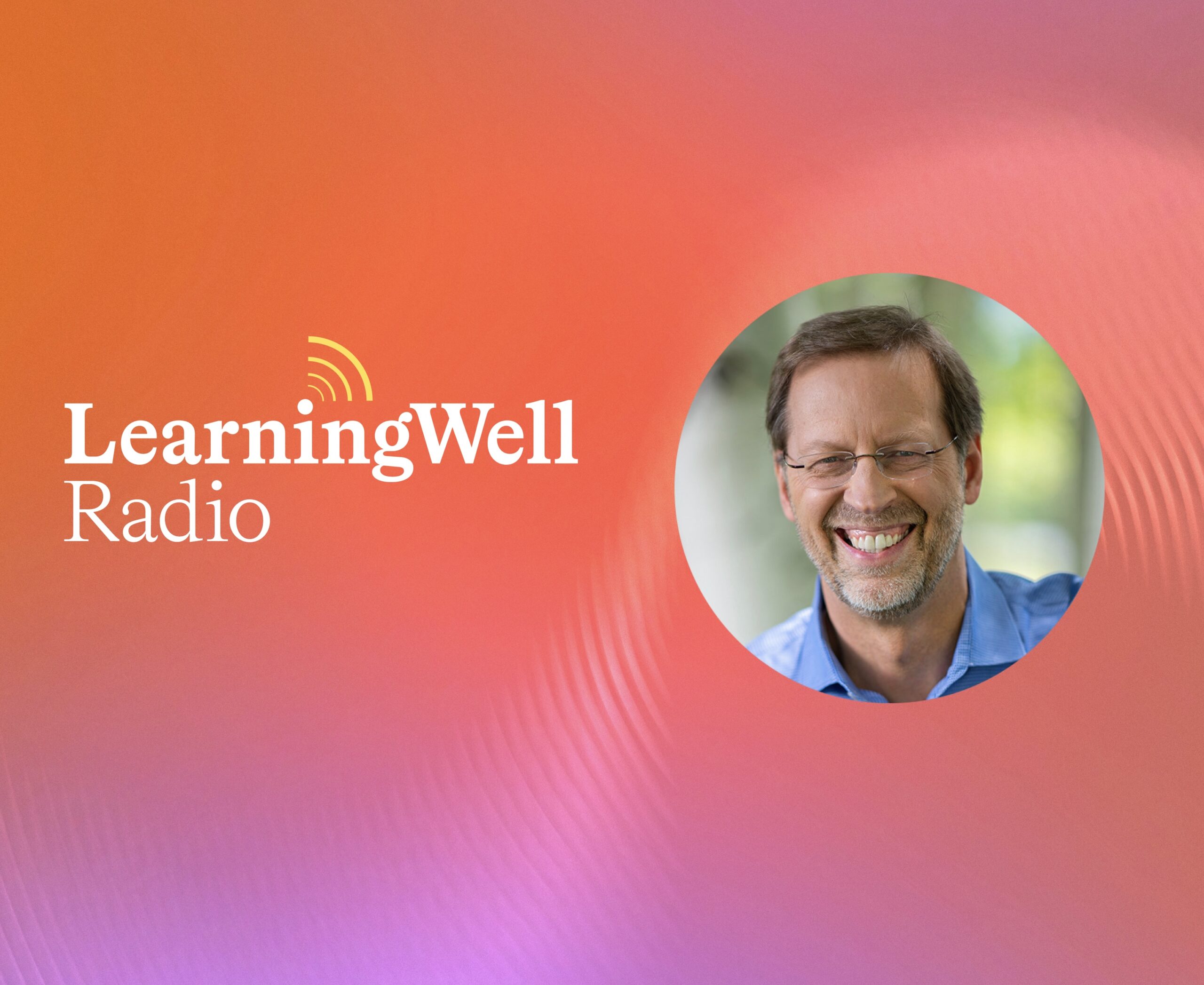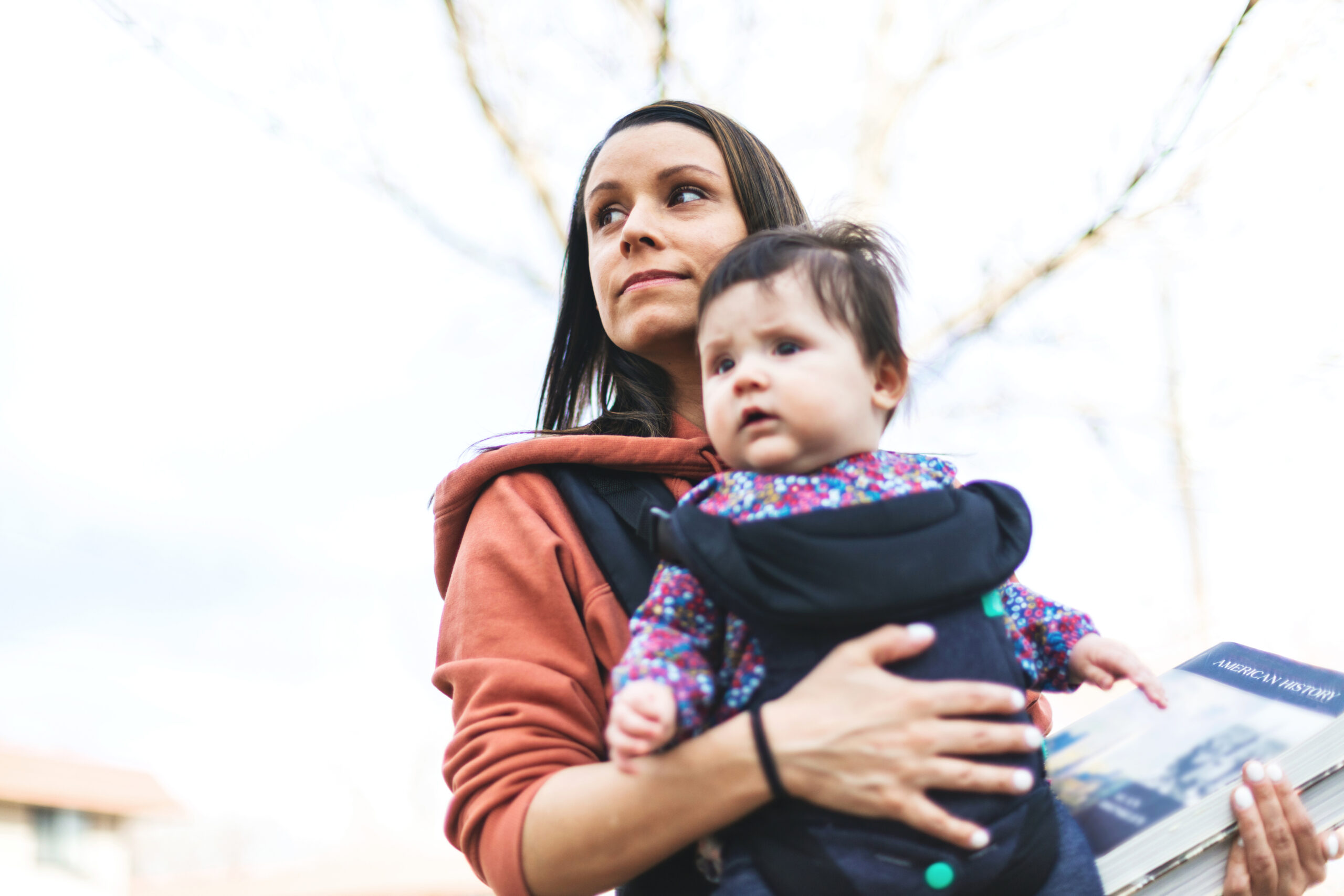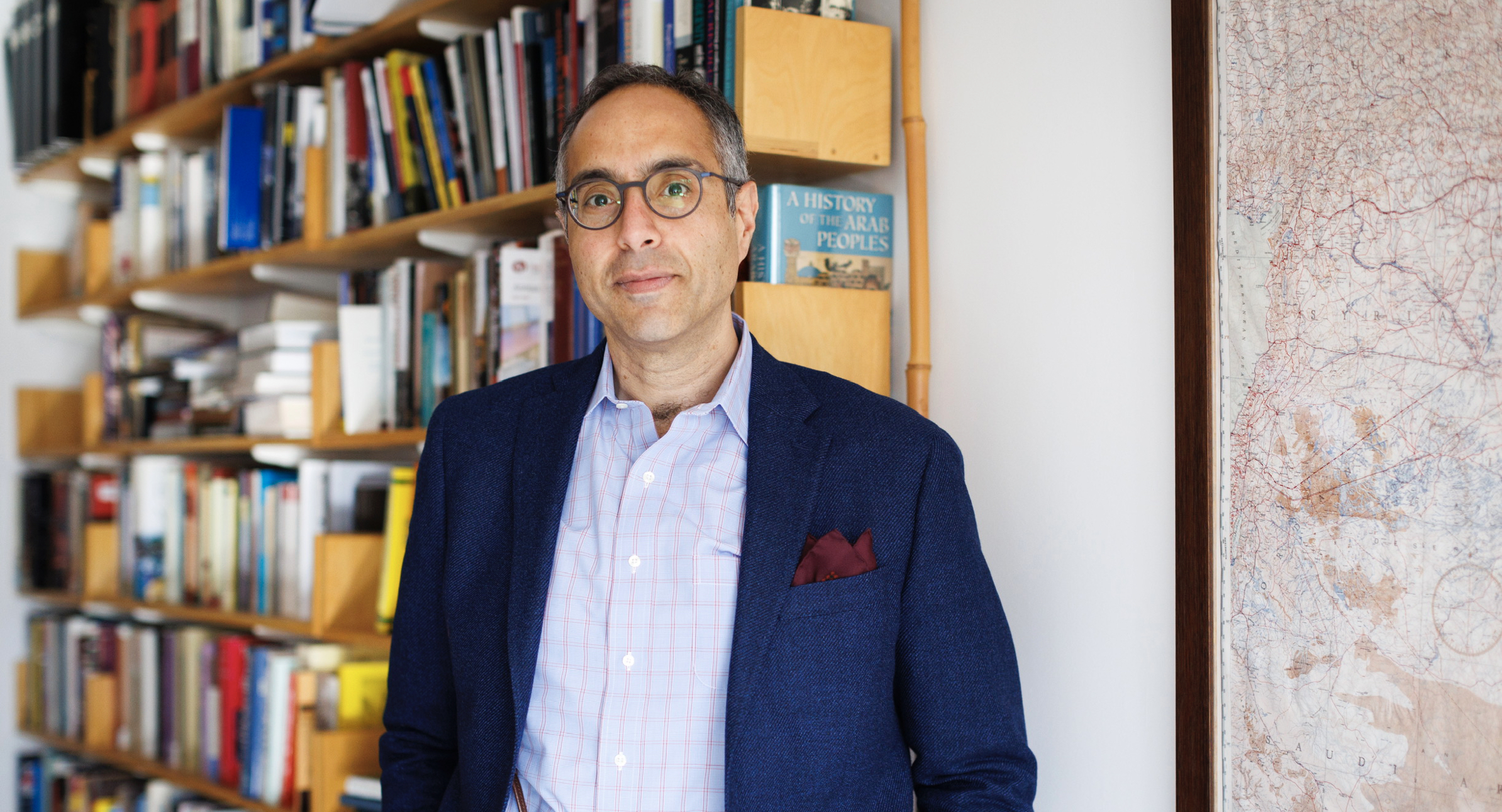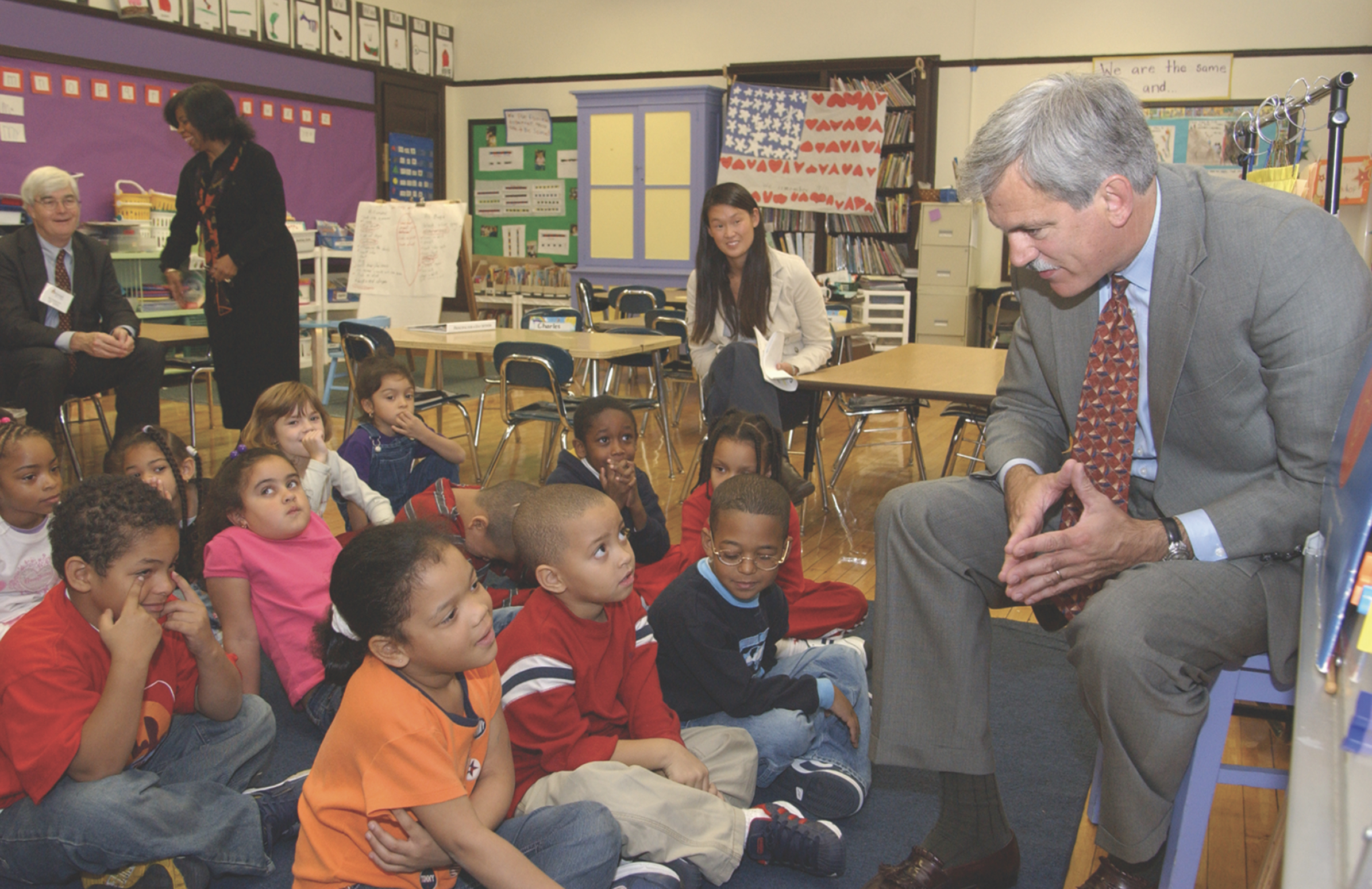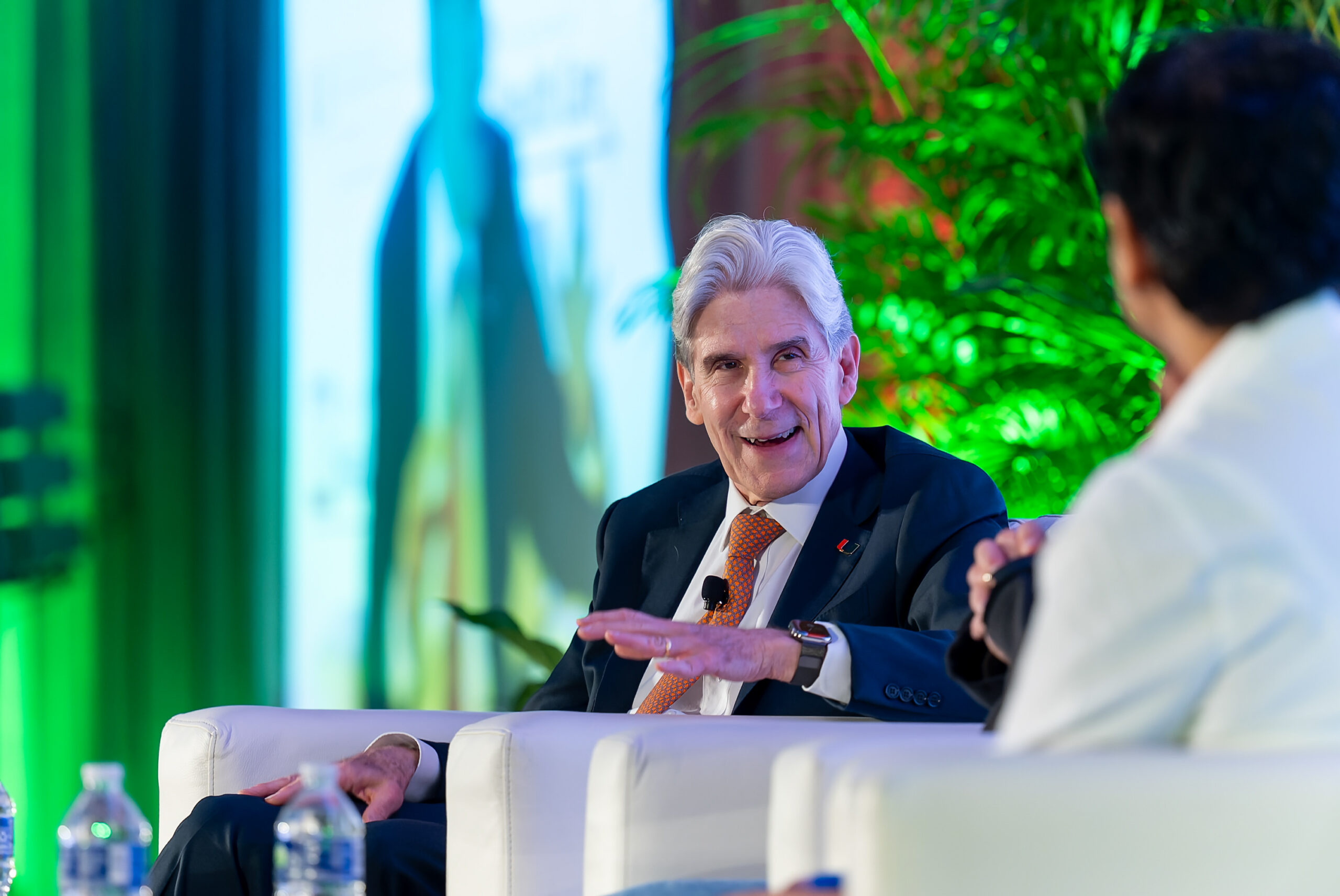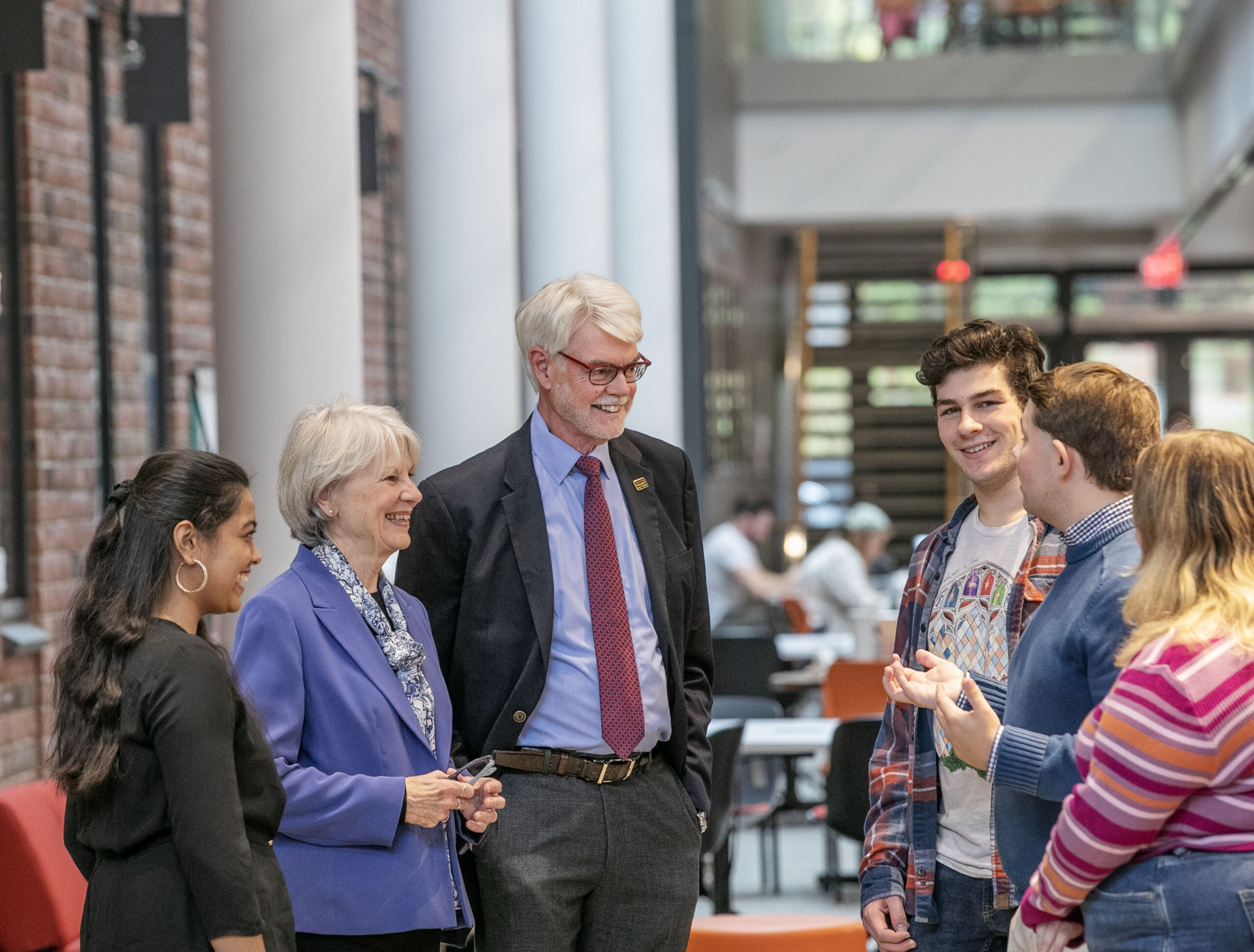The following is a transcript of LearningWell Radio’s interview with Dan Porterfield on his new book “Mindset Matters: The Power of College to Activate Lifelong Growth.” You can listen to the episode on Spotify or Apple Podcasts.
Marjorie Malpiede:
This is Learning Well Radio, the podcast of Learning Well Magazine, covering the intersection of higher education and lifelong wellbeing. I’m Marjorie Malpiede, the editor of Learning Well and your host. Today, Dan Porterfield is president and CEO of the Aspen Institute, a global organization committed to realizing a free just and equitable society. He’s also the former president of Franklin and Marshall College, where from 2011 to 2018, he led the achievement of a number of student-centered milestones, including tripling the enrollment of low-income students and expanding student wellness and career services. Dan’s new book is called Mindset Matters, the Power of College to Activate Lifelong Growth. He joins us today at Learning Well Radio to talk about how higher education can achieve its promise to shape mindsets that enable students to thrive in an uncertain and rapidly changing world. Dan, welcome to Learning Well Radio.
Dan Porterfield:
Thank you, Marjorie, and thank you for that description of my book. It’s better than I could have done on my own.
Marjorie Malpiede:
I’ve got to tell you, I loved your book. Are you ready to give us some highlights?
Dan Porterfield:
Sure thing.
Marjorie Malpiede:
First, I wanted to ask, and it’s so obvious from the first page, this book really comes from a place of deep experience for you in terms of your mentoring students. Can you talk about those experiences first and how they may have led you or compelled you to write the book?
Dan Porterfield:
Oh, thank you, Marjorie. I was fortunate that I was exposed to education and great educators from the time I was growing up in Baltimore City as a child, which included having great coaches and mentors throughout all the different experiences I had playing sports in Baltimore, going to Loyola High School, later going to Georgetown University. I have a huge list of caring adults from my developmental times who played important roles in my life by setting an example, investing in me, listening and caring, encouraging me, sometimes challenging me or criticizing me, all those different kinds of experiences. But when I was younger, I coached basketball, I worked with court supervised youth, I worked with immigrant families in their homes in Washington, D.C., I taught in prisons and I had a set of experiences in my twenties that allowed me to be an educator, and that motivated me, inspired me to pursue a PhD and to envision college education as the place where I would develop my career. I got into working at the college level, having already both benefited from mentorship and been a mentor many times over. And so I do bring that joy to this book and everything I do.
Marjorie Malpiede:
Well, it comes through in the pages. The other thing I want to ask you, Dan, you were a college president. You were also particularly attuned to the students’ development in a way that you don’t always see in the president’s office.
Dan Porterfield:
I don’t know what to say about how other people get into this role of leading a college and university and what experiences they have, but my life has been so enriched by being a teacher and a mentor and a coach. So one of the things I’ve always looked for is more when I was at Georgetown University, I was senior vice president for strategic development and also an English professor I taught most semesters. But about five years into my experience at Georgetown, my wife and I chose to move into a residence hall with our three daughters who at that age were six, five and zero. And so, for eight years before going to F and M, we lived in the ground floor of Copley Residence Hall and were the faculty family. I was teaching, I was working at the senior level and I was living on campus, and all those roles were complementary of course, but the opportunity to be present 24/7 to the student experience at Georgetown was just so enlightening and inspiring to me. It made me want to be a president that was in close touch with the student body.
Marjorie Malpiede:
The book is called Mindset Matters. Great title by the way. And you start by describing growth and fixed mindsets, with a conclusion that encouraging a growth mindset is one of the major goals of higher education. Can you elaborate on that with an eye towards why, as you argue in the book, it’s more important than ever?
Dan Porterfield:
Yes. So first of all, Carol Dweck is the brilliant psychologist and professor of psychology who came up with the concept of growth and fixed mindsets. When I read her book Mindset years ago, it influenced how I taught my students at Georgetown and later at Franklin and Marshall, because Professor Dweck came to see through her research that people adopt a view about their capacity to handle change and to be able to grow in the face of change, to meet new challenges, to learn new skills, to climb new mountains, to develop new capacities. And she found that people tended to adopt either the mindset, I can do it, I’m a learner, or the opposite: I’m not good at that. I found myself as a professor and as a leader on Georgetown’s campus, so inspired by the idea that my actions as the professor, as the faculty and residents could directly influence a young person’s lifelong perception of their capacity to take on new challenges, to lead their learning, to be able to expand their capability. This idea that our capability and our talent is malleable and not fixed is I think first of all, absolutely true. And secondly, a great resource for educators because it reminds us if we can ignite in our students their capacity for self-development, if we can help them think of themselves as equipped and able to lead their own learning, we are giving them the gift of themselves for life. Be the person that ignites, in a younger student, their self-confidence that whatever may come, they can take responsibility for leading their learning.
Marjorie Malpiede:
And to be on the receiving end of that, Dan, is so hopeful, and I got to say unusual in terms of the way many of us went through our education, which is What are you good at? Oh, okay, you’re good at that. And I think that’s just such an interesting insight, to think, You know what? I don’t really know what I’m going to be or do until I explore it more. And to your point, college is the place to do it.
Dan Porterfield:
Well, I think that also just for anybody listening, think about the educators in your life who were most influential. Almost always, the ones you lean on were the ones that said, You can do it and let me help you be able to know you can do it. Let me challenge you, instruct you, motivate you, and then express my faith in you. And I got that sense of educators having faith in me all across my learning journey from third grade on, but especially the Jesuits who taught me at high school and at Georgetown University who has a set, and I had at least 10 or 12 different professors or teachers who were Jesuits again and again, their worldview, their understanding of the human person was that we were beings in development, and that their job was to foster and nurture that developmental process, not to limit it.
Marjorie Malpiede:
In the book, you talk about five different kinds of mindsets that are critical to this holistic approach, which again is the Jesuit way of looking at learning, and you illuminate these with stories about students themselves. It’s one of the things I love most about your book because it was the best way to illustrate your point by talking about the students’ journeys. Can you describe those five mindsets and maybe tell us a little bit about the students that for you sort of characterize the best of those.
Dan Porterfield:
So overall, I believe that growth mindsets express themselves in certain directions. What I explored was how the residential college experience fosters in students growth mindsets for discovery to be the one that can look for answers. No one’s thought to look for creation, the one who can make something that didn’t exist before for mentorship, the one who can give mentoring so that another person can develop what’s great inside of them for teamwork, for collaboration, for working as a part of a group in a way that advances the power of the collective. And then for striving. And by striving, what I mean by that is that we drive our growth in a way that the growth is in pursuit of what we value most, that our values and our growth are reinforcing. So those five growth mindsets I think are exceptionally valuable in today’s economy and today’s society.
The reason I say that is because as I think we all know, there’s so much change coming faster and faster. What is the cause of that change? A lot of it is technology, the rise of artificial intelligence being only the latest example. All of our jobs are evolving constantly because of technological change and because of the plethora of new knowledge, there’s also change happening demographically. There’s change happening in terms of the climate, the ecosystem, and there’s change happening in terms of communications technologies which connect people in far-flung places so much more easily. So if you think of the individual human being making her way in a world of rapid change, more change faster and faster and faster change, what is it that can allow for coherence and a feeling of empowerment? It’s that you think I have the capacity to thrive in change because I can be the one that discovers because I can create, because I can partner with people to do something together because I can learn on the go as a mentee and because I can pursue my values, my growth and my values, not just do what somebody else tells me to do. And so I find this notion of growth mindset is even more empowering if you think about being in a very dynamic sort of turbulent, disruptive ecosystem and economy because it centers the individual on our ability to adapt, to learn, and to grow, to meet new challenges. Now then explicated these five mindsets by telling the stories of the learning journeys of students I knew very well at Franklin and Marshall College.
“Their understanding of the human person was that we were beings in development, and that their job was to foster and nurture that developmental process, not to limit it.”
Marjorie Malpiede:
So one of the things that struck me is let’s start with the striver. I’ve got to say that sort of interested me the most. I love that term. You gave the examples of Julia and Aisha, amazing women with great stories to tell. So, again, in your mind and from your experience with them, they have achieved this striver mindset. Can you give us a little bit of what it means to be a striver, how these particularly young women sort of personified that?
Dan Porterfield:
So for me, a striver is first of all the person that’s always relentlessly looking for new experience, for new opportunity, for growth, for the chance to have a different kind of experience because they’ve got a new interest that sparked their curiosity. The strivers are the people on a college campus that are constantly raising their hand and saying, Yes, I’ll join in. Yes, let’s try to do that. They’re the ones that are inventing new events for people to attend or new clubs for students to grow where they’re the ones who are connecting what they’re learning in class to what they might do over the summer. They’re trying out and adopting new possibilities all the time. And the key though for striving is that they’re doing it not simply to achieve a job or to get an award – they’re doing it because they value that growth.
So in the case of Julia Ramsey, she came to Franklin and Marshall College with a deep yearning to be the student who would do it all and achieve the best grades and be the top one. But then she got sick and she was suffering from a condition that essentially affected the tissue in her muscle, very hard to diagnose. It made her exhausted. After a very strong freshman year, she came back for sophomore year and she simply couldn’t stay awake, she couldn’t keep her head up to study, she was lethargic all the time, and while rehearsing for a play she actually collapsed. She was diagnosed with a condition called EDS. She went through a process of trying to get better using all of her willpower. She was always the kid who could work harder, work longer, came back to school, collapsed again. And this time when she went home, she had to have treatment and medical care for more than 18 months.
And so this goal, she had to be the top student, was dramatically disrupted by this condition. And so instead she began to ask herself and talk with her family about: What do I value most, even more than being the number one student, which is kind of extrinsic; what’s intrinsic? What do I value now, as I’ve had so much taken away from me months and months lying in bed, unable to do anything? And she basically came to realize that some simple everyday pleasures like walking around on a campus and taking in what’s around her or having meaningful conversations with people or feeling that she could set her own schedule, that those things were even more important and more true to her than being the number one student in the school. And with the help of a who advised her try to do everything you can, just 5% better than you were, she gradually came to realize that she could control her illness a bit by dialing back the amount of time she spent on studies and dialing back that idea of being number one and dialing up a kind of learning and a growth that was speaking to her experience of being a human being enjoying life in and of itself.
And so she didn’t lower her expectations for herself. She re-centered her expectations on what was most valuable. Then her professors helped her because when she came back to school after that 18 month time on leave, now that her classmates, some of them had graduated that she started with, she eased back into school. She was able to balance what her body could do with her yearning for everyday experience. She graduated then over a course of a couple years with this feeling, even though she wouldn’t have chosen that path of struggle, she was glad it happened because it put her in touch with the values that she wanted to live well beyond college. I look at that story as a way of reminding people that if we can encourage students to strive for growth, but to do it with a deep appreciation for what they value most, we’ve got a great shot at helping students experience fulfillment. And that’s something so many college students today are struggling to feel a sense of fulfillment, sometimes going deep to just ask yourself what is it that really matters can help us focus on the inherently meaningful instead of the more performatively meaningful, if you will.
Marjorie Malpiede:
I am so glad of your explanation of that, and I realize this in the book, but one of my follow up questions to you, I think you’ve pretty much have answered because one of the things you think of when you think of strivers, I mean a lot of strivers are striving themselves into unhealthy situations and from the work that we do in covering student mental health, a lot of, in fact, I think it’s the number one identified source of stress on campus is reaching these academic milestones or making sure that you’re in every kind of leadership position that you’re stacking your resume, all these things that are kind of connote striving, but you are talking about something different, right?
Dan Porterfield:
Absolutely. So in the case of Aisha – and Aisha is a pseudonym – she was a remarkable achiever who came to America from West Africa at the age of, I think it was about 13, was reunited with her father and a stepmother in New York had to learn English on the fly, was expected as the eldest daughter to perform many household duties. And her father really was not comfortable with her even going to college. She had a bit of a battle royale with her father to have the opportunity to leave home and go to Franklin and Marshall, and he was very concerned that she would lose her identity as his daughter, that she would be inauthentic to how he understood she should live her life as a woman, which to him meant she’d returned to Africa for a marriage that he would arrange. And so Aisha at Franklin and Marshall College was this incredible, super engaged student with extraordinary learning, constant leadership and growth.
But when she went home to New York, she had to subordinate all of that. She had lived two identities because that school identity at home would’ve been deeply, deeply threatening to her father. And one of the things that she came to recognize is that she deeply valued having a relationship with her younger siblings and her father and stepmother, even though her father held these constraining views, these kind of older worldview, that she was willing to negotiate two identities and two lives because it’s so mattered to her to have her younger siblings in her life. She was an amazing student. She went on to win a George Mitchell scholarship and to study in Northern Ireland. She’s doing great things with her life now, but for her striving meant finding some kind of a measure of peace with being a bridge person with a foot in two worlds, not having to choose one or the other, and that striving is going to be her life calling basically to have both parts of her identity alive in her, not to have to choose one or the other.
Marjorie Malpiede:
I loved both of those stories and both of them, and I think all of the stories that you tell eliminate another important lesson, which is all of the mentors and supporters along the way that they encountered in college. So I want to turn next to some of the advice that you provide. I think that some of the most important messages here actually come from your subtitle, right, the Power of college to activate Lifelong Growth, many schools throughout the country, and you talk about what it takes to really, and I would say again, back to your examples, really have those interventions with the adults on campus that will lead to this growth, this amazing growth in the mindset that you talk about. So what has to happen, I know it’s a huge and perhaps simplistic question, but what would you say has to happen to change higher education in order for it to fulfill this promise? It has,
Dan Porterfield:
I guess I’d like to say let’s double down on what’s working in terms of what really to ignite growth mindsets in 18 to 23 year olds, which is another way of saying to help young people claim control of their own future, to believe that they have a greatness within them that they can develop and they can apply whatever they do. What’s needed is one, to have caring adults, mentors of various types, including definitely faculty members active in their education, and lots of research has shown the power of caring and involved faculty in the development of young people. It’s probably the number one thing that people remember about their own college experience along with their close friendships. So that happens with faculty that help to inspire students to push themselves academically. It happens with faculty who serve as mentors and as guideposts to give students a place to come to reflect together on what they like to do with their lives or what they’re encountering as challenges.
It also happens through writing centers, through career centers, through coaches, through people that work in residence halls and facilitate collective learning that way. The most important thing I believe, to develop the talents of young people and the confidence they can keep developing those talents is educational relationships with adults. The second next thing that I think critically matters is strong peer experience recruiting and encouraging students who want to be active learners and who want to take the constant opportunity to say yes to growth. And there’s a lot of students out there that really want to go to college, really want to grow and develop themselves, and the single biggest barrier to those students going to have those opportunities is finances. And I really believe that the investment our institutions need to make is in faculty mentors and in student financial aid. Those two investments above all others will unlock opportunity.
A third thing that’s worth thinking about is how we can help students to sequence their learning so that they have the experience of yes, learning something and then knowing they’ve learned. So it’s both learning, documenting, seeing that you’ve learned, and then the third step is learning how you can do it again, and then finally learning that you love it and those are the elements of a growth mindset or that you sequence learning, you see that you’ve learned, you know can learn again and you know love learning. And when that comes together, it comes together often not because of single magic moments, but of a series of well sequenced learning opportunities. And I saw that over and over at Franklin and Marshall College throughout every level of the curriculum, the faculty were so committed to helping students sequence their learning. I tell four stories in the chapter on the mindset for discovery about students named Charisma Lambert and Eddie Alena and a student named Morgan, a student named Wyatt, and how in each case individual faculty spent the time to help them make the incremental learning that then builds for the next incremental learning and the next incremental learning.
And all that adds up to a tremendously powerful wave of understanding that I’m a learner.
Marjorie Malpiede:
And Dan, that leads to a very strong point you make in the book about post-college lifelong learning, and we don’t think about that enough, and I know just for my own sons who’ve gone through college, they all think about the milestones of graduation and they think learning sort of stops there when in fact what you’re describing is it’s a mindset that continues forever. Correct.
Dan Porterfield:
Well, success in today’s workforce and certainly tomorrow’s requires constant learning and the beauty of a great college education is that you will take away from that the confidence that you can drive your own learning in the future, and that’s critical in almost any field because the field itself is going to change constantly and also your responsibilities as you progress are going to grow. So you’ve almost got to keep learning. I think that the colleges could do maybe an even better job of helping not just providing learning experiences, but helping students document through portfolios or through different ways of developing resumes so that resumes aren’t achievements but more they are a record of continuous progression.
Marjorie Malpiede:
Reflection can help with that too.
Dan Porterfield:
Reflection is essential to a growth mindset because you have to not just learn, but know you’ve learned and know you can learn again.
Marjorie Malpiede:
I’m really glad that you mentioned affordability and access, the financing conundrum of whatever reforms we’re trying to make in higher education. So when I noticed a lot of the examples in your book were of students who were low income or first gen, and I wonder about the correlation between that and this hunger or real desire to pursue their education despite their financial circumstances. What did you witness there in terms of motivation?
Dan Porterfield:
And this, of course, I was witnessing this long before I went to Franklin and Marshall College because I’ve worked with first gen college goers and immigrants and members of lower income communities my whole life, and what’s just so beautiful to witness if you’re working as an educator with people who are searching for opportunity and who have faced disadvantages, is this hunger to learn and grow and give back. I’ve worked with thousands of first gen college students, I have yet to meet a single first gen college student who didn’t want to give back. It’s amazing, not one. And that’s the beauty of education that when you seek it, you love it, you want others to have it too. When I went to Franklin and Marshall College, a group of us on the board and the administration worked to develop what we call the next generation talent strategy through which we reorganized the financial priorities of the institution in order to triple our investment in need-based financial aid.
And we made a promise to every student admitted that we would meet their full demonstrated financial need with a package that was mostly a grant and did involve some work study and also $5,000 a year of loan. We did feel that having some loan was actually a help because we could have more low income students if students were having a small loan as a part of their college experience. And so when we tripled our aid budget, we began to think, well, where are we going to recruit our students? And we reached out, first of all, to the Lancaster Public Schools in Pennsylvania where F&M is and then to a set of access programs around the country that we’re working with motivated lower income students. Some of them you’re probably familiar with, the Posse program, one called SEO in New York, one that was called College Match in California, college Track in California and in New Orleans.
Then we began to reach out also to different public charter schools, the KIPP Educational Network Achievement First Uncommon Schools, Green Dot Noble were some of the ones we worked with, Breakthrough Collaborative, another access program. We also worked with some private schools that had scholarship programs. We had all this financial aid money and we wanted to recruit students who would really benefit from F&M. So we felt partnerships was essential, and through all those different partnerships, we identified students who had what we called the ingredients of talent that we were looking for as a talent strategy. It was not framed as exactly a diversity strategy, as important as diversity is what qualities of talent would predict success for first gen students at a very rigorous liberal arts school. And so our qualities we looked for were curiosity because if you go to a liberal arts college, you’re going to take classes that you’ve never studied before, maybe geology or maybe dance or maybe philosophy classes that weren’t in your high school as a part of the curriculum.
Without curiosity, you might wonder what am I even doing studying this stuff? A second thing we looked for was saying yes to opportunity. Even if you didn’t have a lot of opportunity, what opportunity could you say yes to? Was it babysitting after school? Was it tutoring other students in your school? Was it holding a job over the summer to help your family out? We saw that saying yes to opportunity as predictive of success in a college context where students need to take initiative and seek out opportunity. The third thing was resilience because F&M’s, a very hard school, rigorous school in terms of academic expectations, so everybody struggles through the learning process. If they’re being challenged, who having faced challenges in their life were able to meet those challenges, not because they overcame them all, but because if they got knocked down, they could get back up.
If they had a setback, they had some perspective to help them go forward or they could lean on the resources of their culture or their religion or their family as an inspiration in dealing with difficult times. The talent to have a vision for education, somebody say, is that talent? Yes. If you’re going to commit yourself to four years of doing something meaningful and hard, you’re going to borrow money. You’re going to say, leave home, you’re going to start off in this whole new world. Do you go because somebody told you to or because you have a vision for why it matters. So those qualities of talent, again, saying yes to opportunity, resilience, curiosity, and having a vision of education. Were so highly predictive of success that our first gen students at Franklin and Marshall College right off the bat, even their first year, achieved the same grades pretty much as the student body as a whole.
And later we started to see first gen students overperforming in terms of representation at summa and magna com laude, or secure winning prestigious scholarship competitions. The graduation rates were always at or above domestic students as a whole at F&M. And so what I’m trying to say here is that we need to look at all students as a collection of assets and capabilities and potential. There’s talent in every zip code and there’s hunger in every zip code, and there’s a special kind of combination of talent and hunger that we find in lower income communities. Amazing point. It’s a collective effort. The faculty are critical to this because the faculty bought into this idea that Franklin and Marshall could triple at basically our enrollment of Pell Grant students, which meant triple our Latino students, triple our African-American students, triple our rural students. Everything tripled and the school got even stronger because there were that many more highly engaged students. But there are individual faculty members that I can name a lot, but someone like Ken Hess in chemistry who committed himself to working with all these first gen pre-med students and really was this amazing facilitator for students right off the bat feeling and knowing that they belonged. Ken was just one of many that I admire so much because of the way that they created a climate that allowed incoming students from underrepresented backgrounds to think of themselves as the talent in our talent strategy, not the diversity in somebody else’s student body.
Marjorie Malpiede:
I love that distinction and I am glad you made it because a lot of schools who have done similar efforts, very well intentioned, have sort of forgotten that piece. If you focus on the numbers and not the belonging, it’s not going to work.
Dan Porterfield:
And that doesn’t mean there’s not going to then be challenges. I write about Charisma Lambert, a student from Newark who overcame the feeling of imposter syndrome during her first year at F&M, and for her, a critical breakthrough enabled by faculty was that she could use F&M to learn about dynamics of her life story and Newark’s life story, that the college was equipping her to have even more understanding of the causes and consequences of inequity. And so she more than belonged F&M was her power pack for the life she wanted to live, or a different student, Nadia Johnson, who came into F&M believing that as a first gen college kid, she should be pre-med because if she was a doctor, she could help people in our community, and the only thing was that wasn’t where her interests lie.
She was doing it because she was living the identity of a high powered, high achieving student, but her fulfillment, she realized wasn’t found through that avenue with faculty guiding her and supporting her, she took the risk of changing majors, went into sociology, nailed it, and now for the last six years has been a incredible educator in Baltimore city and public education working with students like her and so fulfilled by doing it for her imposter syndrome was living into an identity of the high achiever at first that didn’t actually fit with what she values most. These journeys of learning and discovery, of course, like all growth, there’s pain in the process. I try to write with permission from my mentees about the pain points because it is in pain often that we experience growth and awareness and ultimately a sense of purpose in our lives
Marjorie Malpiede:
And for their educational journeys and certainly what they’re going to be facing. I want to ask one last question, and again, it’s two or three parts, so forgive me, but it’s a little more philosophical. I loved your point in the book about the necessity for a growth mindset given the world we’re living in towards a universal good versus something that’s just an individual benefit. You argue that growth mindset setters can navigate rapid change towards good outcomes like improving the planet or expanding economic opportunity, but how do we get students to think in terms of these universal goods when so much in their world and in society encourages them to think inwardly?
Dan Porterfield:
I think that the one way to do that is by having as the overall educational environment, it’s very vibrant where students are able to be exposed in and out of class to the experiences of others, the needs of communities, the needs of the world where college is in part about a widening of perspective and a coming to see the relationship of self and other through all kinds of relationships with people in your neighborhood, with people in your country, with people on the other side of the planet. We’re all living in a network of mutuality and dependency as Dr. King said. And so I think that a rich educational environment constantly exposing students to new and encouraging them to take the risk of learning the new is the best way to invite students to choose the course for them that will allow them to give back, but give back in a way that’s resonant with their sense of identity.
That’s why I think that for some it’s about discovery, and so they need faculty present to help them see themselves as able to discover. For others it’s about making their own mark as a creator. For others, it’s about teamwork. There shouldn’t be one way to make a difference, but the environment should always be about growth and expanding our range of exposures, if you will. I end the book by writing about three students who all ended up at Franklin and Marshall College because it was pretty much the only option for them of a school like this. They all came from schools where almost nobody went to college. One is a Muslim immigrant whose name is Akbar Hussein, who came from Bangladesh, lived in a workers’ factory as a child in Saudi Arabia before coming to America. The second is a student named Marra Jones, who came from a highly segregated community in Coatesville, Pennsylvania, where there was tremendous racial discrimination and educational inequality in the schools and public health systems and housing that she grew up with.
She found her way to F&M because of a single college advisor who encouraged her to push herself to a school like this. The third Sheldon, Ruby comes from central Pennsylvania from a small rural community, all white fundamentalist Christian where he had never encountered anybody who was black, who was gay, who was Muslim, who was Jewish. His exposure, he was the only one in school just about that went to college. Any exposure he had, his first two years of college was new. And those three, Akbar, Marra and Sheldon, each one of them is exemplary, but they’re also representative of the talent in their communities. Today, Akbar at age 30 or something is the chief policy advisor to the governor of Pennsylvania. Marra is a freshly minted clinical psychologist having earned her PhD at University of Illinois. After serving and Teach for America, Sheldon spent his junior year studying abroad, including in Bangladesh living with a Muslim family.
He then won a wrangle fellowship which paid for his graduate education at Georgetown. Now he’s a diplomat in the US State Department, and these three students were just about the only ones in their schools who went to college. F and m was the only place that offered them admission. They were offered full scholarships because of our full need approaches, and they took their opportunity to work with incredible faculty to become for our country a policy leader, a clinical psychologist, and a diplomat, and one is black and one is Muslim American and one is white rural background. And that is the vision that I have for education for all young people: that before college and in college, we ignite what is great in young people by giving them the belief that they can drive their own learning and we support them every step of the way. And then we have the benefit as a society, I believe, of seeing people grow into roles of leadership and public service that will make our country stronger. Cynicism has never solved a single problem in our country. There’s plenty of people cynical about the world, and when they start solving problems, we should start adopting cynicism, but otherwise, we need to invest in people that are optimistic, can do mindset, that want to learn and give, and from that they will create the kind of world we want to live in.
Marjorie Malpiede:
I have a personal reflection here, Dan. We’ve had many conversations and I’ve always found you to be so optimistic, and I’m reading through the lines here in the book, and it’s also based on my own experience because every time I actually get out on campus and talk to students, I feel hopeful and I can see now why you are actually so optimistic.
Dan Porterfield:
All you’ve got to do in my opinion, is walk around and get to know young people, and I don’t only mean on college campuses, we just get to know young people. Real young people just listen, just engage. Just allow them to express the things that interest them, that make them laugh or that give them a feeling of optimism and then double down on that. Education is something where if you get it, I benefit. That’s what’s so distinctive about it compared to all the other social goods. If everybody gets it, my children are better off. And so I hope as a society we will come together around this notion that young people are rising. Generations are a place where we can land in all our disagreement, we can land around the idea that let’s invest in the greatness of our young people, let’s give them educational and work opportunities that give them the chance to be the leaders of their own lives. Let’s take pride in what it means to be a country that pays it forward.
Marjorie Malpiede:
Well, I am going to have that be the last word. Thank you so much, Dan. This has been an absolute joy to talk to you, and again, it has really been inspirational and it gives us all more reason to get up and do the work we do in higher ed.
Dan Porterfield:
There’s hundreds of thousands of people across all of our campuses of all types, with students of all backgrounds who are doing what I celebrate in the book every single day. That’s not the dominantly told story, but that is the dominant reality.
Marjorie Malpiede:
The book is called Mindset Matters, the Power of College to Activate Lifelong Growth, and it is available starting June 25th on Amazon, correct, Dan?
Dan Porterfield:
That’s right. Johns Hopkins University is the press, and I hope that readers who, if they do read it, take the time to linger over those stories because there is an eminence in the life experiences of students in our midst and ask ourselves, are these 35 or 40 students at Porterfield profiles from F&M? Are they all that different from the students on my campus in my neighborhood? The answer to that question actually is no. They’re exemplary, as I said before, but they’re also representative.
Marjorie Malpiede:
Thank you so much, my friend. I’m sincerely grateful for you joining us on Learning Well Radio today.
Ian Elsner:
This has been Learning WellRadio, a production of LearningWell, for more information about our work, go to learningwellmag.org. And if you like what we’re doing, leave us a rating or review. Thanks so much for listening.


